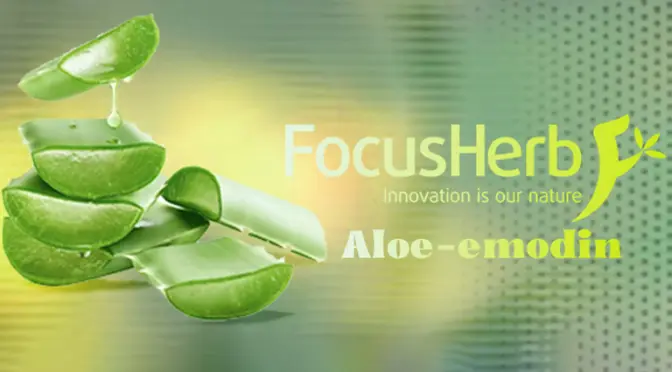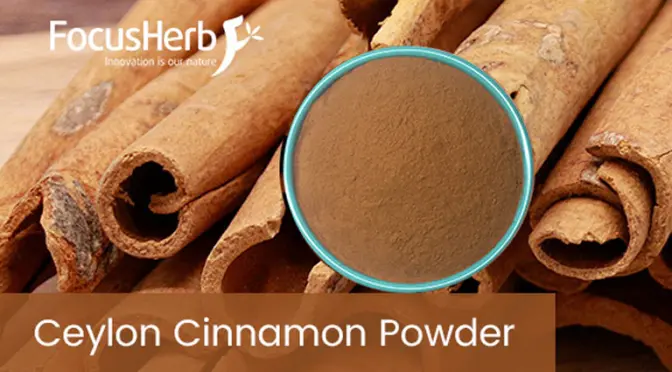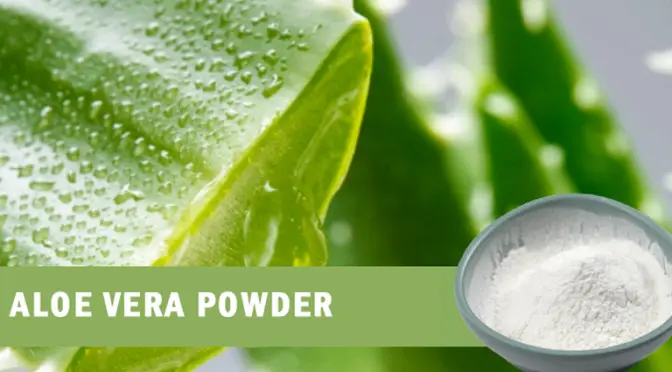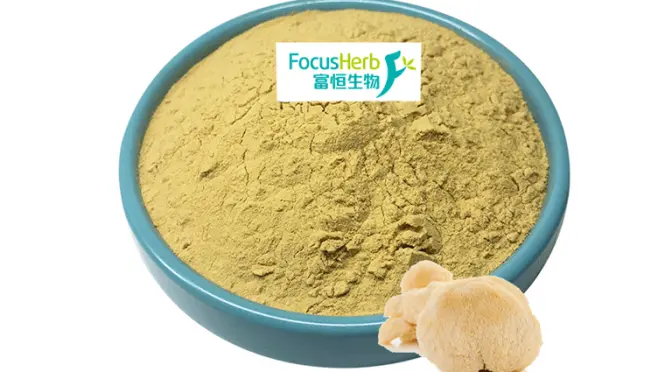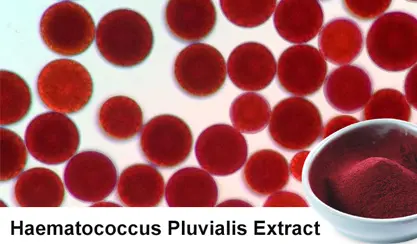Flaxseed gum, also known as Frank gum and sesame gum, is a powdered product made from flax seeds or seed coats through a series of complex extraction, concentration, refining and drying processes.
As a new type of food additive, flaxseed gum has made a great splash in the food industry, and is also gradually emerging in other fields such as the pharmaceutical industry.
In the food industry, it is like a “jack of all trades”, able to replace traditional additives such as pectin, agar, gum arabic, and alginate, and plays multiple roles such as thickener, adhesive, stabilizer, emulsifier and foaming agent, greatly expanding the possibilities of food processing and injecting new vitality into the innovative development of the food industry.
Unique Physical and Chemical Properties
The appearance of flaxseed gum is diverse. The most common ones are yellow granular crystals and white to beige powder. When you sniff it closely, you can also smell the faint sweet fragrance from the dry powder, which gives people a rustic and natural feeling.
In terms of solubility, flaxseed gum has a unique performance. It can slowly absorb water and form a dispersion system with low viscosity. When the concentration is lower than 1-2g/L, it can be completely dissolved.
At this point, its solubility is higher than guar gum and locust bean gum, but it is still slightly inferior to gum arabic.
From the perspective of chemical composition, flaxseed gum is composed of acidic polysaccharides and neutral polysaccharides, among which acidic polysaccharides are dominant, and the molar ratio of acidic polysaccharides to neutral polysaccharides is 2:1. This unique ratio gives flaxseed gum special chemical properties.
Excellent Functionality
Emulsification:
In the emulsification comparison test, flaxseed gum was used as the test group, and gum arabic, seaweed gum, etc. were used as the control group. Different concentration gradient tests were set up.
Flaxseed gum has the best emulsification effect, and the higher the concentration, the stronger the emulsification effect. It is a kind of gum with strong emulsification, which can make fat disperse better and increase the amount of fat meat to make the food fragrant and not greasy.
Gelling:
As a hydrophilic colloid, some hydrophilic colloids (such as gelatin, etc.) can gel by themselves, and some need to be compounded with other colloids. The viscosity of flaxseed gum is affected by many factors.
The viscosity of 1% flaxseed gum ranges from 350 to 2500mpa.s, and the viscosity of undried gum is higher;
The longer the gel is placed, the higher the viscosity, and the higher the temperature, the lower the viscosity;
The viscosity is the highest when the pH is 6-8, and the viscosity will decrease under acidic and alkaline conditions.
This characteristic enables it to help form a stable structure in food and improve the texture.
Foaming property:
It can be dissolved in water in any proportion to form a uniform glue solution. Adding 50% – 60% alcohol will produce flocculent precipitation. A 0.5% glue solution can form a uniform and stable foam after centrifuge separation.
It will not destroy the foam recovery solution until it is heated to 90℃ for half an hour. Good foaming property allows it to be used in food scenarios that require foaming.
Non-toxicity and detoxification:
It is negative after acute toxicity and micronucleus tests, and is a non-toxic substance. ADI does not make special provisions, and LD50 ≥ 15g/kg (oral in mice).
It also has a significant detoxification effect on a variety of poisons (dimethoate, mercuric oxide, etc.), with high safety, which is conducive to application in food and other industries.
Rheological properties:
The viscosity of 10g/L flaxseed gum solution is about 0.02-0.08Pa・s. The viscosity increases with the increase of mass concentration and decreases with the increase of shear rate. The effect of temperature on its apparent viscosity conforms to the Arrhenius model, with an activation energy of 271.48kJ/mol.
The pH has a great influence. When the pH decreases under acidic conditions and increases under alkaline conditions, the apparent viscosity decreases and reaches a maximum value when it is neutral. These rheological characteristics make it adaptable to different processing environments and ensure product stability.
Water retention and antifreeze properties:
It has good water retention, and the water absorption ratio in sausages is 1:20, which can maintain strength and elasticity, so that the sausage body can be stored for a long time without releasing water, extending the shelf life; the antifreeze and anti-starch recovery functions are outstanding, and it is the best antifreeze property among edible gums, which can improve the antifreeze-thaw property of food, delay the crystallization rate during storage, and improve the shape and structure of products, such as ice cream and rice and flour products.
Thickening and suspension stability:
As a thickener, it can give the product a suitable viscosity and a refreshing and smooth taste. In the beverage, it can keep the tiny pulp particles evenly suspended for a long time, extending the shelf life.
The effect is better than some colloids. It can also form a stable complex structure with protein, starch, etc. to improve the stability of the food system.
Wide Range of Applications
Food industry
Flaxseed gum is widely used in the food industry and can be called the “magic key” to improve food quality. It plays a vital role in the production of ice cream. The taste of ice cream depends largely on the size and distribution of ice crystals, and flaxseed gum can effectively inhibit the formation of ice crystals, making the texture of ice cream delicate, glutinous and smooth, as soft as silk.
Not only that, it can also improve the melting resistance and sudden heat resistance of ice cream. On hot summer days, even if ice cream is exposed to higher temperatures, it can maintain a relatively complete shape and will not melt quickly, allowing consumers to enjoy the coolness and sweetness.
In the field of meat products, flaxseed gum also performs well. It is like a “quality guardian” of meat products. When flaxseed gum is added to meat products, it can reduce the loss of fat and meat flavor during cooking and retain the original flavor of meat to the greatest extent.
It can also improve the thermal stability of meat protein, myofibrillar protein and salt-soluble meat protein, enhance the gel strength of salt-soluble meat protein, make the structure of meat products more compact and chewier.
Adding flaxseed gum in the later stage of processing can also enhance the elasticity of meat products, make meat products full of toughness when chewing, and enhance rehydration, eliminate starch feeling, increase chewing feeling, and make meat products more delicious.
For beverages, flaxseed gum plays the role of “stabilizing elf”. After some fruit juices are left for a period of time, the fine pulp particles contained in them will sink, and the color of the juice will change, affecting the appearance.
Even after high-pressure homogenization, it is difficult to avoid this situation. When flaxseed gum is added to juice as a suspension stabilizer, it can make the fine pulp particles evenly suspended in the juice for a long time, extending the shelf life of the juice.
Other industries
In the pharmaceutical industry, flaxseed gum also has a unique use. It can be used as an adhesive to tightly bond various drug ingredients together to ensure the molding and stability of drug preparations.
At the same time, it can also act as a disintegrant. When the drug enters the human body, flaxseed gum can help the drug disintegrate quickly, allowing the drug ingredients to be released faster and absorbed by the human body, thereby improving the efficacy of the drug.
In the daily chemical industry, flaxseed gum has transformed itself into a “moisturizing star” and “thickening expert” in cosmetics. It can provide good moisturizing properties for cosmetics and keep the skin hydrated.
In terms of thickening, it can adjust the texture of cosmetics, making lotions thicker and creams more delicate, improving the use experience of cosmetics, and allowing consumers to feel a better texture when using cosmetics.
Production Process and Quality Control
The production process of flaxseed gum has a crucial impact on its quality. The industrial preparation process of flaxseed gum is mainly based on water extraction and alcohol precipitation, which is a common and classic extraction method.
This traditional water extraction method also has some limitations. For example, in the extraction process, factors such as temperature, time, material-liquid ratio and pH value of the extracting solution will have a significant impact on the extraction rate.
In addition to the water extraction and alcohol precipitation method, there are other emerging extraction technologies that are constantly developing and exploring. For example, the ultrasonic extraction of flaxseed gum has received widespread attention in recent years.
When using flaxseed cake as raw material for research, it was found that the extraction rate of the ultrasonic method was higher than that of the hot water extraction method. Ultrasonic extraction can utilize the cavitation effect of ultrasound to increase the contact area between flaxseed cells and solvents, thereby dissolving a larger amount of flaxseed gum.
Unlike the thick and complete structure of FSG extracted by hot water extraction, the structure of FSG extracted by ultrasound is thin and fragmented.
In terms of physical and chemical properties, the foaming, foam stability, emulsification and emulsification stability of ultrasonically extracted FSG are better than those of hot water extracted FSG.
The results of antioxidant test show that ultrasonically extracted FSG exhibits higher total reducing power and scavenging ability of hydroxyl radicals and DPPH free radicals, while hot water extracted FSG has higher scavenging ability of ABTS cationic free radicals.
In terms of quality control, there are strict quality indicators and specifications. The QB 2731-2005 standard has detailed provisions on the requirements, test methods, inspection rules and signs, packaging, transportation, storage, etc. of food additive flaxseed gum.
Development Prospects and Challenges
The development prospects of flaxseed gum are promising, driven by a global trend toward natural and healthy food consumption. This growing demand presents a favourable market environment for flaxseed gum, a natural food additive.
From a market perspective, research forecasts indicate that China’s flaxseed gum industry will experience accelerated growth from 2025 to 2030.
The market is expected to expand at an annual compound growth rate of 12%–15%, with the overall market size surpassing 8.5 billion yuan by 2030.
Internationally, demand for flaxseed gum is also rising steadily, with increasing recognition and adoption across various regions. Consequently, the global market for flaxseed gum is poised for continued expansion.
However, flaxseed gum also faces several challenges. In terms of market competition, despite its unique advantages, flaxseed gum competes with traditional food additives and emerging substitutes.
New synthetic colloids and other natural alternatives are emerging, posing potential threats to flaxseed gum in areas such as price and performance.
Technically, while progress has been made in the extraction and application of flaxseed gum, several challenges remain. The traditional water-extraction and alcohol precipitation process is energy-intensive and hinders further processing and utilisation of flaxseeds.
This not only increases production costs but also limits the efficient use of flaxseed resources. Additionally, further research is needed to enhance the modification and functionality of flaxseed gum to meet the diverse performance requirements of various industries.
Despite these challenges, ongoing research and technological advancements will continue to optimise flaxseed gum’s production process and expand its applications.
As a result, flaxseed gum is expected to be widely adopted across more sectors in the future, creating new opportunities for industry development, improving public health, and contributing significantly to industrial innovation.























